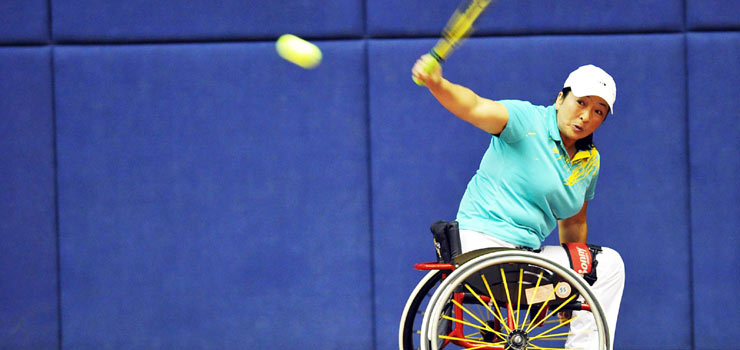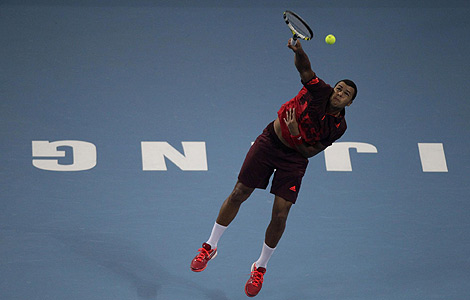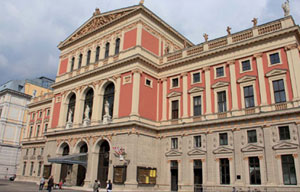United stand crucial in breast cancer battle
Updated: 2011-10-28 11:07
By Lan Kunkler (China Daily European Weekly)
|
|||||||||
As deadly disease is set to become more prevalent, china and UK are joining forces to fight it
 |
|
Zhang Chengliang/China Daily |
Breast cancer remains a major global challenge with nearly 1.4 million cases a year worldwide. It is the commonest cause of death from cancer in women and its incidence has doubled worldwide since 1975. While one-fifth of the world's women live in China, the incidence of breast cancer in most of the country is low compared with those in Western countries. For example, the age-standardized incidence rate of breast cancer in the county of Qidong, Hunan province, is 12.8 per 100,000 women, which is about one-10th that of white women in the United States.
However, while the overall rates of breast cancer in China are low, the incidence of breast cancer is rising rapidly, particularly in urban areas. At current growth rates, it is possible that by 2021 there will be 2.5 million new cases of breast cancer among Chinese women aged 35 to 49. The reasons for this rise are due to many factors, but in particular, the adoption of a Western diet and lifestyle - and the concurrent rise in obesity - is playing an important role.
As a consequence, China is on the verge of a breast cancer epidemic. Some factors creating the surge are linked to economic development, and may as such be unavoidable. Nonetheless, the substantial predicted increase will make the disease a priority in future healthcare infrastructure planning.
The pace of change
Currently, surgery, radiation therapy (also called radiotherapy) and anti-cancer drug treatment are the three principal therapies for early breast cancer. In most Western countries, about 70 percent of patients receive breast conserving surgery (removal of the lump with a small margin of normal tissue) rather than the more mutilating operation of mastectomy.
However, mastectomy rates in China remain high, in part reflecting the preference of either clinicians or patients. Rates of breast conserving surgery are likely to rise as a younger generation of surgeons persuade women in the early stages of the disease of the safety and reduced morbidity of breast conserving surgery compared to mastectomies.
Meanwhile, improvements in breast cancer care - such as the use of drugs such as tamoxifen, or newer hormonal therapy (known as aromatase inhibitors) - are occurring because of large-scale national or international clinical trials. Many of the current global trials of new treatments are coordinated by the Breast International Group, an international consortium of breast cancer specialists and laboratory scientists who design and monitor trials too large to be undertaken by individual countries and requiring the participation of many thousands of patients to answer the research question posed.
For example, a trial called MINDACT is recruiting 6,000 patients to determine whether a molecular "signature" in breast cancer cells could identify patients who do not need chemotherapy. These trials involve networks of hundreds of clinicians worldwide.
While China is increasingly participating in pharmaceutical trials of anti-cancer therapy, it has until recently played little role in trials of radiation therapy. Radiation therapy is one of the most effective local treatments after surgery, using beams of X-rays to sterilize residual cancer cells after surgery.
Radiation delivery technologies have advanced significantly since X-rays were discovered by Rontgen in Germany in 1895; within a year they had been applied to treat breast cancer. Modern radiotherapy techniques use cross-sectional imaging using CT scanning to position the X-ray beams to irradiate optimally the breast (or chest wall after mastectomy) and to minimize dosage to underlying structures such as the lungs and heart. It reduces the risk of recurrence in the breast and also the risk of breast cancer seeding to other organs, leading to premature death. An overview of clinical trials of radiotherapy undertaken by Professor Richard Peto in Oxford shows that for every four recurrences in the breast prevented by radiation therapy, one death from breast cancer is avoided.
International breast radiotherapy trial
With such an enormous rise in the incidence of breast cancer in China, participation in trials of new treatments will be a key strategy in improving breast cancer survival rates.
While trials of anti-cancer drugs have been funded in the pharmaceutical sector, which is rapidly expanding in China, there has been little state or regional funding available to support the evaluation of radiation therapy.
However, over the last four years an important new research collaboration has been forged between the University of Edinburgh and a network of cancer centers in China. This has enabled the centers to participate in a trial of radiotherapy after mastectomy. In all, 1,600 women will receive radiotherapy or no irradiation after surgery and will be followed for 10 years to see if the addition of radiation after mastectomy confers a survival benefit.
In addition, whether a molecular "signature" can be detected in breast cancer cells - which would predict individual benefitting from radiotherapy - will also be investigated. Given the high rates of mastectomy in China, the results of the trial will be highly relevant to improving patient care.
Building a research partnership
The University of Edinburgh has built a growing array of research and educational links with China. For example, the SUPREMO (Selective Utilisation of Postoperative Radiotherapy AftEr MastectOmy) trial, which seeks to evaluate the effectiveness of radiotherapy treatment, is funded by the UK Medical Research Council and directed from the University of Edinburgh under the auspices of the Scottish Cancer Trials Breast Group and the Breast International Group.
Following an initial expression of interest in participating in the trial from Shulian Wang, associate professor of radiation oncology in Beijing in early 2008, I was invited to give a presentation about SUPREMO at the National Congress of Radiation Oncology in Beijing in November 2008.
Following the lecture, I met a small group of interested clinicians from centers including Beijing, Shanghai and Chengdu. A meeting of specialists in breast cancer from the National Cancer Center in Beijing and representatives of the Chinese Academy of the Medical Sciences was facilitated by Chris Godwin, director of the UK Research Councils (RCUK) office in Beijing to facilitate collaboration in the trial. RCUK encourages collaboration in research between the UK and China across a wide range of fields including medicine. Among Chinese colleagues, there was considerable interest in participation, but no funding was available within China.
Support from the charitable sector
I returned to Edinburgh without a clear idea of how research funding could be found. However, a chance meeting with an acquaintance in Edinburgh provided an introduction to a senior executive in the Hong Kong and Shanghai Bank. Through his good auspices a three-way conversation was set up between Shulian Wang and Yexiong Li, chair of the Department of Radiation Oncology at the National Cancer Center in Beijing, the Trustees of the Hong Kong and Shanghai Bank in Hong Kong and the University of Edinburgh. Subsequently, the trial was awarded a generous grant of HK$1 million (92,380 euros) from the William and Elizabeth Davies private foundation, managed by HSBC trustees, to fund the recruitment of the first 60 patients from the Chinese mainland into the SUPREMO trial.
Thereafter, a meeting of over 30 interested clinicians was hosted in Beijing by professor Li and associate professor Wang in November 2009 to discuss the logistics of participation in a network of Chinese centers. The trial protocol was translated into Mandarin. In March 2010, I visited cancer centers in Shanghai and Chengdu to discuss trial participation, accompanied by Nini Yang, director of the International Office of the University of Edinburgh in Beijing, who acted as an advisor and interpreter in the negotiations.
Over the last two years we have successfully recruited 58 patients from four centers in China: Chinese Academy of Medical Sciences, Beijing; Sun Yat-sen University Cancer Center; Zhejiang Cancer Hospital; and the West China Hospital, Chengdu. A recent subsequent grant from HSBC Trustees of HK$830,000 from the Peter Chan Jee Yat Charitable Foundation and the Yeung Ying Yin and May Yeung Foundation will fund the longer-term surveillance of patients recruited to the trial.
This successful research collaboration between the University of Edinburgh and China provides a platform for future research collaboration to make progress in the battle against breast cancer - a fight that, unfortunately, looks set to impact China more heavily in years to come as the disease becomes more prevalent.
The author is a consultant in Clinical Oncology at the Edinburgh Cancer Centre, University of Edinburgh. The opinions expressed in the article do not necessarily reflect those of China Daily.











